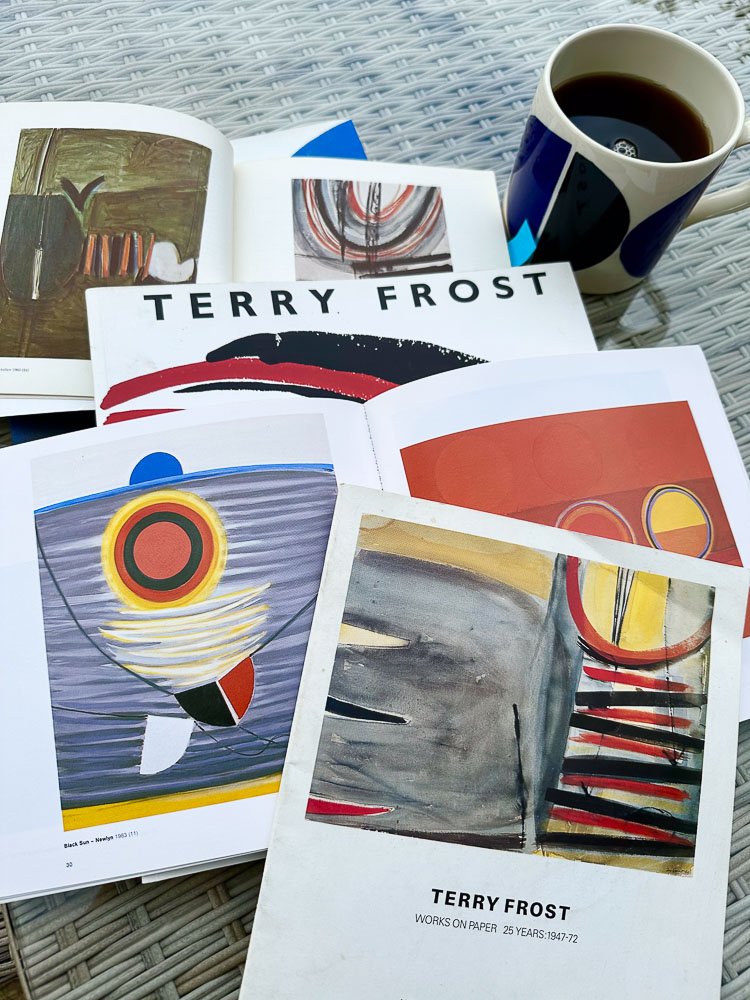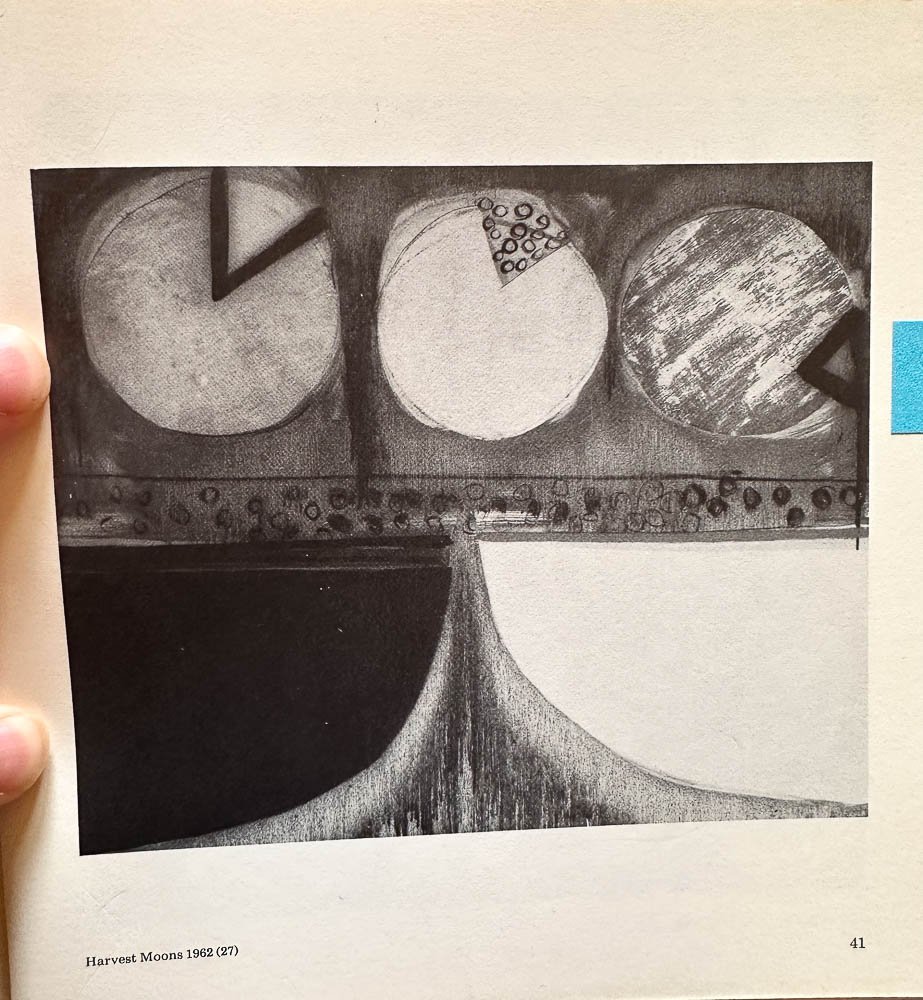How long do Artists nurture and retain ideas? We consider Sir Terry Frost's work for inspiration
The retention of artistic ideas is a thought-provoking question that emerged as I immersed myself in the world of 1960s and 1970s art. As I perused books and absorbed the information and drawings of artists, I found myself contemplating the duration an artist holds onto an idea, shape, or concept for their artwork. Does it reside in their consciousness or subconsciousness? Is it a gradual process, akin to an egg incubating, or does it culminate in a "Eureka!" moment, similar to songwriting?
The thought provoking trigger
Harvest Moons 1962
My intrigue was sparked by a glimpse of Sir Terry Frost's paintings and sketches from that era. One painting that stood out was Harvest Moons from 1962, featured in 'The Arts Council/South West Arts 1976/77' exhibition guide. The lower section of the painting caught my eye with its upward pathway leading to the moons—a recurring shape seen in Frost's 'Laced' works.
Terry Frost - Untitled Sketch early 1970s
Further exploration led me to an untitled sketch from the early 1970s, showcased in the Austin/Desmond Fine Art Catalogue titled 'Terry Frost – Works on Paper 25 Years 1947-72.' This small sketch, measuring only 4 inches by 4 inches and executed on ruled graph paper, depicted a similar pathway leading to a central sun/moon subject.
Could this sketch be the initial inspiration for the Frost screenprint we proudly exhibit in our gallery?
Terry Frost - Black Sun Newlyn 1983
In 'Terry Frost, Painting in the 1980s' by The University of Reading with Recollections and Movements by Adrian Heath, an image named Black Sun – Newlyn 1983 on page 30 caught my attention. This artwork shifted the focus from the foreground pathway to a remarkable four-ringed sun, emanating a luminous haze. While I found the presence of a white quarter-circle shape in the lower left distracting, the true strength of this abstract piece lies in the captivating sun and colours that entice and mesmerise the viewer.
Red, Ochre Black 1992 - the Terry Frost screenprint, currently in the Rastall Art Gallery
Terry Frost - Red Ochre Black 1992
Among our collection is a remarkable screenprint titled 'Red, Ochre & Black,' catalogued as Kemp 134. This signed and dated 1992 artwork by Terry Frost, numbered 44 out of 50, eliminates gradients, stripes, and semicircles, creating a purer form of color and shape. The result is visually striking, exuding a captivating effect that engages viewers. It possesses an almost iconic, almost religious, quality, instantly recognizable and strangely familiar, reflecting the artist's years of skill.
Interestingly, when I posed the question "Why do you like it?" to viewers, no definitive answer emerged, leaving me intrigued by the enigmatic appeal of Frost's creations.
Terry Frost Screenprint - Red, Ochre, Black 1992’ at Rastall Art
Returning to the initial question, did Terry Frost retain the idea behind this design for decades? It is plausible, as artists continually explore and reassess their styles and ideas until they feel ready. The motif of the sun and moon, symbolizing celestial forces, permeates Frost's work over many years and periods.
It might be wishful thinking, but I find it fascinating to imagine that during the early 1970s, the artist conceived an initial idea on a tiny piece of graph paper—a concept that he subsequently evolved, distilled, and matured into the striking screenprint image of 'Red, Ochre & Black 1992,' now gracing our gallery.







